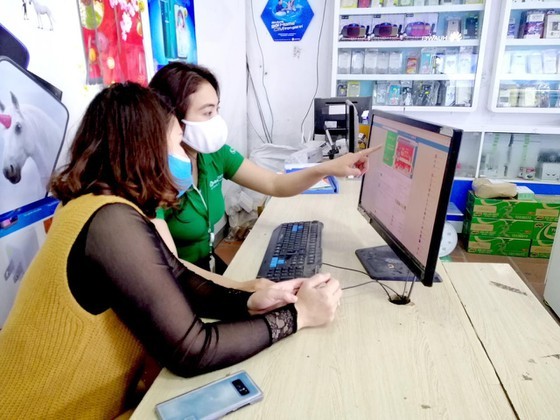
Thanh Luong from District 7 of Ho Chi Minh City shared that formerly she used to frequently withdraw money from ATM for everyday expenses. However, during the previous Covid-19 outbreak in the city, to avoid direct contact, she preferred paying by either her credit card or e-wallet.
This gradual shift of payment method has been quite common among Vietnamese people lately thanks to the digital transformation process happening in the country, as said by Visa Inc. – Vietnam branch.
Statistics reveal that 85 percent of Vietnamese consumers are using e-commerce applications on their smartphone for shopping at least once a week. 44 percent of the Vietnamese first experienced online shopping during the Covid-19 pandemic. 77 percent of Vietnamese consumers are aware of digital banking, and 31 percent are actually using these services, the most preferable of which is utilities bill payment, followed by money transfer to friends and family members. Remarkably, 6 percent of surveyed people announced that they have no need for cash when shopping now.
The growth of cashless payment trend in Vietnam recently is because of wider service provision like e-KYC, internet banking, mobile banking, e-wallet. In addition, many banks in the country are introducing non-physical cards attached into smartphones to change these mobile devices into a payment tool. Payment via QR codes has been lately added into the list of cashless methods as well.
In the upcoming time when mobile money is more widely launched, consumers can even use their mobile phone number for shopping and service payment.
To further promote cashless payment among consumers, banks are adopting service fee reduction or exemption policies for money transfer, multi-service payment. Refund policies for card payment are also used in certain banks.
Obviously, these effective methods have helped banks increase their growth rate despite the harsh Covid-19 outbreak, forcing them to temporarily close their branches.
Sacombank, for example, announced that cashless payment via the bank in the first five months this year rose by 40 percent, along with a 70 percent increase in online payment. Similarly, ACB has reported a double of cashless payment transactions via this bank in the first 8 months of 2021. It enjoyed 10,000 new online accounts via eKYC a day.
Viet Capital Bank revealed that its clients increasingly access its newly provided features for cashless payments like money transfer by QR codes, money receiving by mobile phone, quick account balance view. In the near future, it is going to invest more in advanced features of online investment and money borrowing, online account checking, identity in video calls.
The most prominent concern of many financial institutes at the moment is a suitable legal corridor for the application of cutting edge technological platforms like eKYC, correspondent banks, online money lending.
Therefore, commercial banks have proposed state management agencies to soon complete any necessary legal corridor related to using state-of-the-art digital technologies in banking operations, along with instruction for the pilot of new financial services, products in order to better promote cashless payment in Vietnam.
Dr. Can Van Luc, member of the National Monetary Policy Advisory Council, commented that there is a promising future for cashless payment in Vietnam; yet to master this market, the Government needs to finish the national identity database, develop a safe method for database using, and construct essential digital infrastructure. Meanwhile, payment intermediaries should establish a full ecosystem for their clients with a high level of information security and feedback handling.
























